Dimethyl succinate
Synonym(s):Dimethyl butanedioate;Dimethyl succinate;Succinic acid dimethyl ester
- CAS NO.:106-65-0
- Empirical Formula: C6H10O4
- Molecular Weight: 146.14
- MDL number: MFCD00008466
- EINECS: 203-419-9
- SAFETY DATA SHEET (SDS)
- Update Date: 2025-12-22 14:18:24
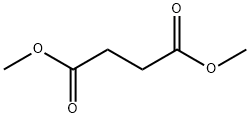
What is Dimethyl succinate?
Chemical properties
Dimethyl succinate is colorless to light yellow liquid and has a pleasant, ethereal, winy odor and fruity, winy and burning flavor. slightly soluble in water (1%), soluble in ethanol (3%), miscible in oil. Natural product exists in fried hazelnuts. It is used as a solvent in paints, lacquers, varnishes, nitrocellulose, paint strippers, dyes, fats, photography, and waxes. It is also used in the manufacture of other succinates.
Occurrence
Reported found in filbert nuts and starfruit.
The Uses of Dimethyl succinate
Dimethyl succinate is used as a flavoring agent. It have wide range of industrial applications such as Functional fluids (open systems), Intermediates, Paint additives and coating additives, Pigments Solvents, Viscosity adjustors.
Preparation
By direct esterification of the acid with the alcohol in benzene solution at the boil in the presence of concentrated H2SO4
Definition
ChEBI: Dimethyl succinate is a fatty acid methyl ester.
Taste threshold values
Taste characteristics at 0.1%: sweet, fruity, green with a soapy, waxy nuance
Synthesis Reference(s)
Journal of the American Chemical Society, 100, p. 1119, 1978 DOI: 10.1021/ja00472a016
The Journal of Organic Chemistry, 59, p. 3500, 1994 DOI: 10.1021/jo00091a050
General Description
Colorless liquid.
Air & Water Reactions
Water soluble.
Reactivity Profile
Dimethyl succinate reacts with acids to liberate heat along with methanol and succinic acid. May react with strong oxidizing acids to liberate enough heat to ignite the reaction products. Heat is also generated by the interaction with caustic solutions. Flammable hydrogen is generated with alkali metals and hydrides.
Health Hazard
May be harmful by inhalation, ingestion or skin absorption. May cause irritation.
Fire Hazard
Dimethyl succinate is combustible. Vapor forms explosive mixtures with air.
Properties of Dimethyl succinate
| Melting point: | 16-19 °C (lit.) |
| Boiling point: | 200 °C (lit.) |
| Density | 1.117 g/mL at 25 °C (lit.) |
| vapor pressure | 0.3 mm Hg ( 20 °C) |
| refractive index | n |
| FEMA | 2396 | DIMETHYL SUCCINATE |
| Flash point: | 185 °F |
| storage temp. | Store below +30°C. |
| solubility | 75g/l |
| form | Liquid |
| color | Clear |
| Odor | Fruity |
| explosive limit | 1.0-8.5%(V) |
| Water Solubility | 8.5 g/L (20 ºC) |
| Merck | 14,8869 |
| JECFA Number | 616 |
| BRN | 956776 |
| Dielectric constant | 5.1(20℃) |
| Stability: | Stable. Combustible. Incompatible with oxidizing agents, acids, bases, reducing agents. |
| CAS DataBase Reference | 106-65-0(CAS DataBase Reference) |
| NIST Chemistry Reference | Butanedioic acid, dimethyl ester(106-65-0) |
| EPA Substance Registry System | Dimethyl succinate (106-65-0) |
Safety information for Dimethyl succinate
| Signal word | Warning |
| Pictogram(s) |
 Exclamation Mark Irritant GHS07 |
| GHS Hazard Statements |
H319:Serious eye damage/eye irritation |
| Precautionary Statement Codes |
P264:Wash hands thoroughly after handling. P264:Wash skin thouroughly after handling. P280:Wear protective gloves/protective clothing/eye protection/face protection. P305+P351+P338:IF IN EYES: Rinse cautiously with water for several minutes. Remove contact lenses, if present and easy to do. Continuerinsing. P337+P313:IF eye irritation persists: Get medical advice/attention. |
Computed Descriptors for Dimethyl succinate
Dimethyl succinate manufacturer
JSK Chemicals
New Products
Indole Methyl Resin tert-butyl 9-methoxy-3-azaspiro[5.5]undecane-3-carboxylate Boc-His(Boc)-OH 2-CTC Resin 4-Chloro-7-tosy1-7Hpyrrolo[2,3-d]pyrimidine 5,7-Dibromo-1H-indole 2,5-dichloro-N-hydroxy-4,6-dimethylpyridine-3-carboximidamide 2,2-Dimethoxy-7-azaspiro[3.5]nonane hydrochloride 4-chloromethyl-5-methyl-1,3-dioxol-2-one (DMDO-Cl) R-2-BENZYLOXY PROPIONIC ACID 1,1’-CARBONYLDIIMIDAZOLE 1,1’-CARBONYLDI (1,2-4 TRIAZOLE) N-METHYL INDAZOLE-3-CARBOXYLIC ACID 4-((2-hydroxyethyl)thio)benzoic acid 1-(TERT-BUTOXYCARBONYL)-2-PYRROLIDINONE Methyl 6-methylnicotinate 3-Pyridineacrylic acid tert-Butyl carbazate TETRAHYDRO-2H-PYRAN-3-OL 2-((4-morpholinophenylamino) (methylthio) methylene) malononitrile 3-(4-morpholinophenylamino)-5-amino-1H-pyrazole-4-carbonitrile 2,4-dihydroxybenzaldehyde 1,3-Diethyl-1,3-Diphenylurea Methyl 2-methylquinoline-6-carboxylateRelated products of tetrahydrofuran
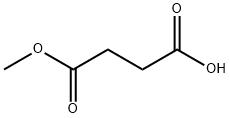

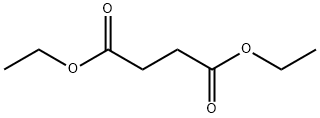
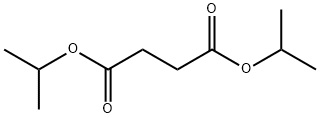

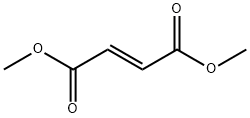
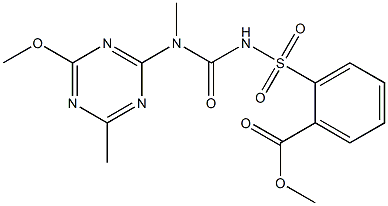

You may like
-
 106-65-0 Dimethyl succinate 98%View Details
106-65-0 Dimethyl succinate 98%View Details
106-65-0 -
 Dimethyl succinate 98%View Details
Dimethyl succinate 98%View Details
106-65-0 -
 106-65-0 Dimethyl succinate, 98% 99%View Details
106-65-0 Dimethyl succinate, 98% 99%View Details
106-65-0 -
 Dimethyl Succinate CAS 106-65-0View Details
Dimethyl Succinate CAS 106-65-0View Details
106-65-0 -
 Dimethyl succinate CAS 106-65-0View Details
Dimethyl succinate CAS 106-65-0View Details
106-65-0 -
 Dimethyl succinate 95% CAS 106-65-0View Details
Dimethyl succinate 95% CAS 106-65-0View Details
106-65-0 -
 DBE-4 dibasic ester CAS 106-65-0View Details
DBE-4 dibasic ester CAS 106-65-0View Details
106-65-0 -
 Thiourea 99% ARView Details
Thiourea 99% ARView Details
62-56-6
